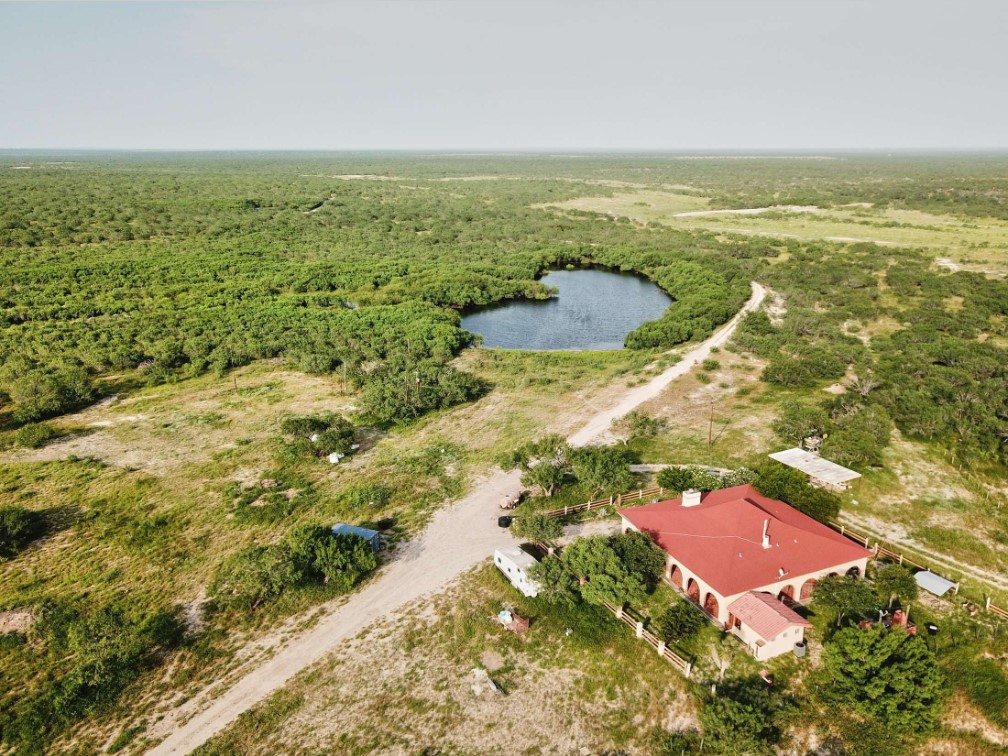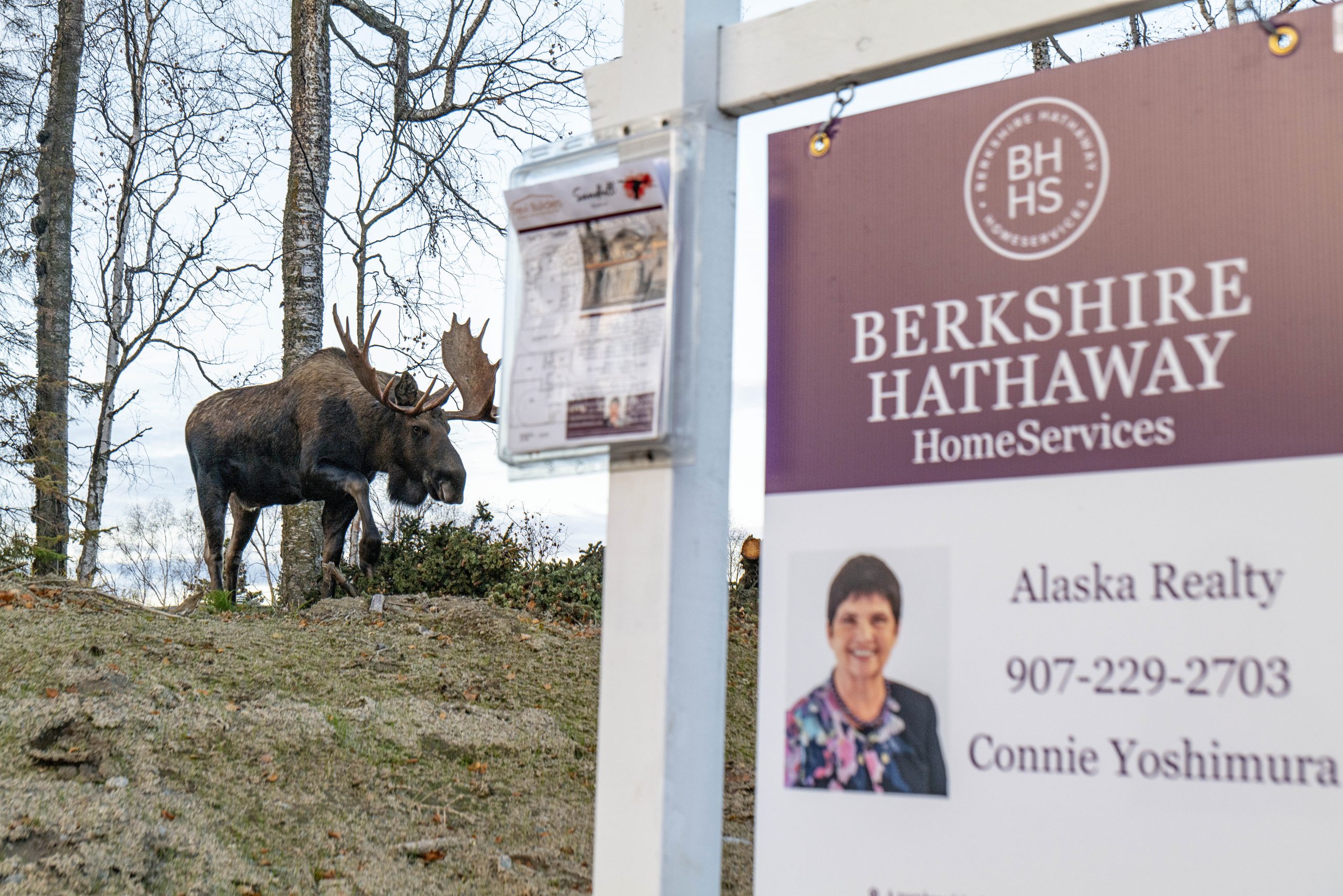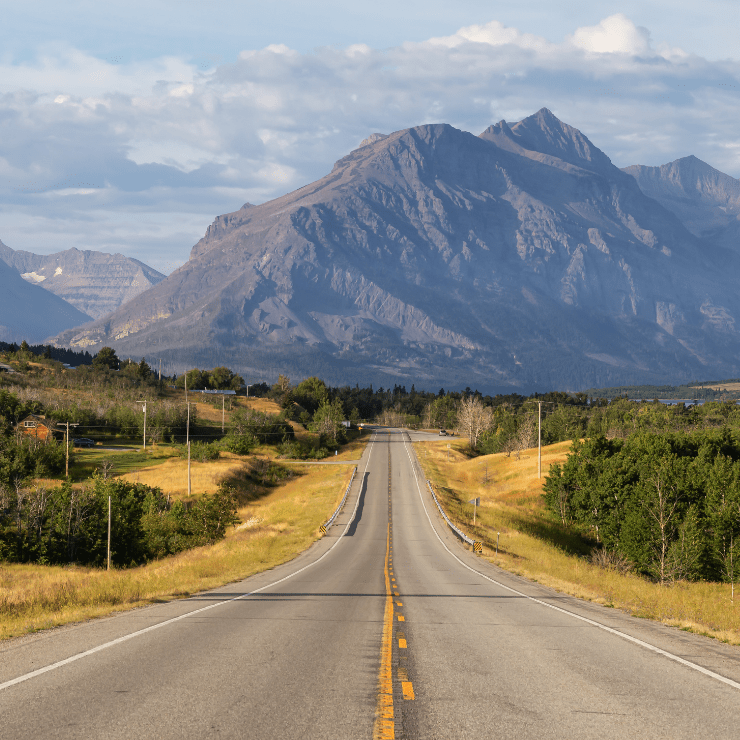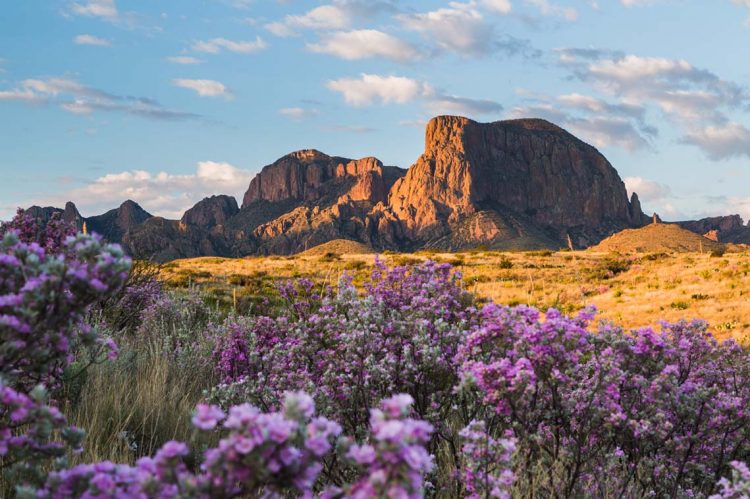Editor’s note: Even in an industry where jobs are determined by the disparate geography and composition of their individual communities, there are realms that transcend the real estate firmament, where markets, environments or policy make the experience of buying and selling homes something else entirely. People who embark on careers in these spaces take on a different set of challenges than the vast majority of those in the industry.
In RISMedia’s “Real Estate On The Edge” series, we take a look at some of these people and the spaces they work in, highlighting some of the most interesting places and environments to practice real estate.
In the far southwest corner of Texas lies Zapata County. Nestled against the U.S./Mexico border, the county—around 1,000 square miles of rocky desert, with a population of around 15,000—is not home to any incorporated municipalities or border crossings. About a third of the population lives in the relatively bustling county seat of Zapata, which offers all the small-town comfort that a few chain restaurants, mom-and-pop bakeries, laundromats and a newly built public playground can provide. A scrubby nine-hole golf course at the edge of town holds regular tournaments and fundraisers, and the local high school football field can accommodate more than half the town’s population for football and other sporting events. The nearest city of any measurable size is Laredo, about an hour’s drive to the north through mostly empty desert, and the nearest metro, San Antonio, lies almost four hours away by car.

Liz Mendoza is the broker/owner of Cornerstone Real Estate. She has lived in Zapata her entire life. Most of her family works in education, she says, but since 1996, her passion has been real estate—something that started as a college job but evolved into much more than that as she took over the county’s only real estate brokerage.
“I’m the little one from this little, small city but I’m a contender,” she promises.
Most homes in Zapata County go for around $100,000, though you can get a fixer-upper for half that. Like Mendoza, many of her clients have deep roots in the small desert community, going back multiple generations. People will inherit land or a home and may want to sell, while others save enough money to upgrade after living in one of the many prefabricated structures or trailers that essentially serve as starter homes.
About 15% of Zapata residents work in the oil industry, chasing jobs that have steadily moved out of the area according to Mendoza. In 1954, a dam meant to mitigate flooding issues in the Rio Grande completely destroyed the original settlement, with many property owners forced to flee on short notice, abandoning family homesteads. But many of them chose to remain in the area despite its remote location and challenges.
Mendoza describes this attitude in her beloved community as not one of defiance, but persistence. People in Zapata are not staying in spite of the area’s tough history, but because of it, relishing the community and the lifestyle that their ancestors cultivated.
“They keep lands in their families for generations,” she says.
About 2,000 miles to the north, on the far side of the country, is another place that has historically drawn those who want to embrace a self-sustaining, rugged lifestyle far from the city rat-race. With a population of just over a million people spread out over 150,000 square miles of deeply forested, mountain terrain, Montana is one of the least densely populated states behind only Wyoming and Alaska.
Will Friedner is not a native Montanan, he admits. He founded his brokerage, Montana Life Realty, about 15 years ago with his wife after growing up in Minnesota.
“The most fulfilling thing is just showing people the state and watching them react,” he says. “It’s still one of the few places left in the lower 48 that is still so wild.”
Though it has little else in common superficially with the shale-scattered clay of South Texas, people who choose to live in rural Montana share something very important with the folks of Zapata: pride. Friedner says that people in his state are looking for a lifestyle that is deeply personal and unique, centered on the state’s ability to provide space, and a rugged communion with nature.
“I like to joke that you can watch your dog run away for three days, because there’s nothing there,” he says.
Further north—much further north, in fact—is a place that most people understand is a frontier. Connie Yoshimura is a broker at Alaska Realty in Anchorage, through Berkshire Hathaway HomeServices. She took a road trip up through Canada 40 years ago, she says, and never looked back. Though there is truth to what outsiders imagine when they think of her state—long winters, wildlife, empty space and self-reliance—Alaska is also a place of great diversity, she says, with bustling cultural centers and people living all sorts of lifestyles.
“We’re actually a combination of a frontier state and a pretty sophisticated urban environment,” Yoshimura says.
Those who are seeking to move there, or move within the state, mostly know what they are doing, she says, and also have in common a tremendous appreciation of what Alaska can offer them and their families.
“I personally enjoy working with buyers and sellers and learning what brings them to this particular point in time,” she adds. “Some people come for great adventure.”
What these frontier brokers all have in common, though, is a deeply personal reason for doing what they do, where they do it—a connection with the people, with the landscape or with the history of these communities. Whether they grew up there or are transplants themselves, each has remained out on the edge, spending decades getting to know all the unique challenges and extraordinary experiences of these places—which in the end, is what the job is all about.
What It’s Like
Housing is especially unique in Zapata, according to Mendoza, because no developer has ever built speculatively there—every house is either a prefab or a custom design commissioned (or constructed) by the property owner.
Because of this, and because she has been essentially the only real estate agent in the county for close to two decades, Mendoza says she has sold some’s homes three or four times.
“I know the history of it, and I can tell them that. Some may or may not believe it, but I’ll tell them, ‘Oh I remember when I sold it the first time, and this is what it looked like,'” she laughs. “Limited inventory, you know, so we trade the same house over and over.”
One of Mendoza’s properties outside the town of Zapata—a three-bedroom, two-bath ranch listed at $105,000—is described as “secluded…yet property is not isolated.” Among the listing photos is one of a rabbit crouched beside a cactus in the backyard (the property is great for hunting, the listing says).
Another listing consists of two prefab structures (one that was formerly used as a beauty shop) connected by a sheet-metal overhang that forms a patio, or carport depending on preference. The lot includes shaded animal pens as well as a lake view, according to the listing.
Mendoza says it took a while for the larger REALTOR® organization in Laredo—a relative metropolis with a population of about 100,000—to take her seriously, but she has since proved herself as a scrappy and passionate member of the community, being elected to the Board of Directors in Laredo last year.
“There’s other big-time brokers that trade properties left and right, and at first I was kind of being looked down ,” she says. “They’ve learned to respect me, and now they appreciate Zapata because I tell them the good .”
At the other extreme in Zapata is the relocation industry. U.S. Customs and Border Protection Agents are consistently transferred in and out, and oil industry workers—who make up about 15% of Zapata County jobs according to census data—also arrive regularly, many from thousands of miles away and hailing from very different geographic and demographic areas.
“We deal a lot with relocation,” she says. “Some people are used to having Walmart a block away. We don’t have that; it’s 45 minutes to the first Walmart. So we kind of explain that to people.”
While these kinds of situations—communicating the unique challenges of the area to outsiders—make up a good portion of Mendoza’s business in Zapata, out-of-staters have been Friedner’s bread and butter, at least for the last two years or so.
Montana metros were the third-fastest growing in the nation as far as price appreciation this past spring and summer, according to data collected by the National Association of REALTORS®, as many people fled coastal markets looking for space and affordability during the pandemic.
With all the transplants, it got to the point where late last summer Friedner filmed a video titled “Living in Montana: Things They Don’t Tell You,” which was meant to address issues most outsiders are not prepared for. That video went viral, garnering almost 2.5 million views as of press time.
“Ironically enough, the video that goes viral is the one that’s about why you shouldn’t move to Montana,” he deadpans.
He was inspired to make that video, he explains, after driving a couple from Los Angeles hours into the wilderness to see a home they had viewed online, and felt was a sure home-run.
“They just had no idea what they were getting into,” he says. “By the time we got to it, their eyes were huge and…obviously weren’t going to live out there once they saw it in person.”
Frieder says he now strongly recommends that any out-of-state buyers take a drive through the state before he sends them any specific listing, just so they can get an idea of just how vast and isolated it is—have a chance to spot a bear on the side of the road or experience a few hundred miles of cell-service blackout.
If they are still interested after that, he says they can start discussing specific properties or issues, like roads that are only ploughed if you plough them yourself, grizzly bears and wolves encroaching on properties (only an issue in certain parts of the state) and what “off-grid” really means as far as your daily, monthly and yearly investment of time and money.
“Some people are scared off a little bit, some people just think it sounds even better,” Friedner laughs.
This is in stark contrast to Alaska where Yoshimura says people almost always have a good idea of what to expect if they are planning on moving to the state.
“Everybody that’s here enjoys the great outdoors,” she says.
Claire James is Alaska Realty’s business development director working with Yoshimura at Berkshire Hathaway HomeServices. She herself is an avid backpacker and outdoor enthusiast who regularly embarks on weeklong hikes through the Alaskan wilderness. But she says a lot of folks coming up the state end up in relatively standard living arrangements in the cities or suburbs.

“Often (people) will say they’re looking for a cabin in the woods,” she says. “But in reality, we live in a major city. We do not live in igloos in Alaska. Once they’re here, they realize they want to live where the work and where the homes are, and maybe in the future they can purchase that second cabin.”
That isn’t to say there aren’t plenty of unique aspects to the market. A lot of people who purchase lake homes need to know whether they are able to land or dock small airplanes there, according to Yoshimura, as air travel is extremely common in a state where roads simply do not reach every town or community. Wildlife is also endemic to all parts of the state—not just out in the boonies.
“I was out walking my dog last night and I was greeted by a huge bull moose,” James says.
People who have lived there a while are not necessarily surprised or in awe of these types of encounters—both black and brown bears, bald eagle and wolves—but instead approach the situation from a practical standpoint.
“A lot of times you just think, ‘Okay should I run?'” James laughs.
Another unique issue is for people who live in “fly-to” locations outside of the major cities and have to account for the fact that all goods and services have to arrive by plane. The trade-off is of course, access to some of the best fishing, hiking and incredible landscapes in the world.
“Those towns are just beautiful,” James says.
Generally, Yoshimura says people in Alaska are looking for two things: space and a view. Lake homes are very popular, and anything with mountain or water views will be in high demand. Lake access or really spectacular views can easily drive the price of a property up by six figures, she says.
These things are also highly sought after in Montana, according to Friedner, but the vast surge of interest from outsiders has also resulted in a lot of push-back from the folks who have lived there for generations. In the “Living In Montana” viral video, Friedner said that some locals have begun referring to Bozeman—the state’s fourth-largest metro with a population of just over 50,000—as “Boze Angeles” due to the influx of California migrants.
But though restaurants might be busier and roads might occasionally get clogged (relatively speaking) around resort areas, Frieder says Montana has plenty of room for newcomers.
“As much as the locals don’t want to hear that,” he says, “you can drive ten minutes out of town and you’re in the middle of nowhere. I don’t want to see Montana turn into Southern California, but it’s going to be long after I’m gone before it ever gets to that point.”
Why We’re Here
In Zapata, welcoming strangers has never been an issue, according to Mendoza—something that can be traced through the area’s history of ranchers and frontiersmen who stuck together through hard times. That includes decades of 19th century outlaws feuding across the almost stateless land, and political upheaval during the short-lived Republic of the Rio Grande uprising in 1840, with the county named after slain revolutionary general Antonio Zapata.
But despite its lineage of conflict, Mexican and White Anglo-Europeans in Zapata have almost always gotten along, according to the Texas Historical Society, even as nearby regions saw significant ethnic and racial violence through much of the late 19th and 20th centuries.
Mendoza says this spirit of peace and harmony persists today, with the majority-Hispanic population happy to mingle with relocated workers, seasonal vacationers at nearby Falcon Lake and any new neighbors regardless of race or origin.
“We’ve learned to mesh well with everyone,” she says. “People here are raised different—we’re raised to respect. Everybody here—in Spanish we say, tio and tia. So everywhere I go, people are my tio and tia, people I don’t even know. That’s the respect we have for people because we were brought up with that kind of morals.”
Living in a place where everyone refers to you as an uncle or aunt is part of what has kept Mendoza in Zapata, she says, and part of what makes her work more than a job—makes it a service to every person who wants to share the unique, enduring community she belongs to.
“These are people that I live with, these are people that I’m going to see at the store tomorrow,” she says. “I need to make sure that I did a good job for them because I’m going to bump into them every day, and I want to make sure they’re happy with the services that I could provide. So I take a lot of pride in that.”
In Montana, there is a very different kind of priority. Many people come to the state and stay there because they would rather not see their neighbors every day, according to Friedner.
“Everybody wants to go be a cowboy in Montana,” he said.

The peace and opportunity that comes from that amount of space has a growing appeal, he says, with a lot of out-of-state folks explicitly asking for homes that are “off the grid” or properties with no legal restrictions.
In his video, Friedner talked about housing covenants, which dictate the kind of activities or uses allowed on a particular lot. A lot of people come to him asking for properties that have no covenants, and because most of rural Montana land is also unzoned, they imagine they can do essentially whatever they want with that kind of property.
Though this is often attainable, Friedner warned that there are also drawbacks. A neighbor can park dozens of junk cars haphazardly in their front yard, open a store or start raising livestock next door and there is little recourse for a property owner who is bothered by these things.
Because of this need for space, sometimes even acres and acres of distance isn’t enough, Friedner says, as people value their self-reliance, history and privacy in a way that is hard to describe to outsiders. Likewise in Alaska, where James and Yoshimura say that there is an inherent respect earned simply by calling the state home.
“Alaskans are really proud to live here,” she says.
“There’s just no more beautiful place than Alaska,” Yoshimura affirms.
Diversity is more than environment and landscape, she adds. Indigenous people speak almost 150 different languages in local schools, and Anchorage and Juneau boast growing hispanic communities, she says. And though the 18% of the population that identifies as indigenous has faced violence and continues to battle discrimination, several young people have also been able to move into the cities, according to Yoshimura, to attend colleges or elevate employment opportunities.
Every individual and family—immigrant or native— bring tremendous and unique individual histories to the state, Yoshimura says, traceable across the vast Alaskan landscape and beyond.
And that is the real appeal to being in this part of the world, especially as a real estate agent, she adds. Every place where people live has written its own story, stories that are often as wild and ancient as the rolling tundras, sparkling fjords and soaring mountains that initially draw people to explore Alaska. It is this deeper landscape of community and history that someone like Yoshimura, someone like Friedner, someone like Mendoza gets to explore every day, and the reason why they all have spent decades as real estate agents in the communities that they know—and love—more than anyone.
 Jesse Williams is RISMedia’s associate online editor. Email him your real estate news ideas to jwilliams@rismedia.com.
Jesse Williams is RISMedia’s associate online editor. Email him your real estate news ideas to jwilliams@rismedia.com.












